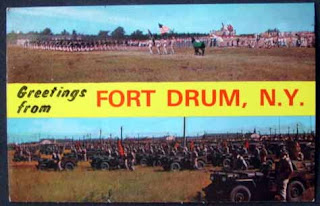 For the first time in New York state, a rare collection of quilts and comforters used by children, Jewish fugitives, Nazi Resistance workers, and Mennonite refugees fleeing the post-war Soviet Union who were given shelter by a Dutch Mennonite woman will be seen Fridays, Saturdays and Sundays April 24-June 28 at the Seaway Trail Discovery Center in Sackets Harbor, Jefferson County, NY.
For the first time in New York state, a rare collection of quilts and comforters used by children, Jewish fugitives, Nazi Resistance workers, and Mennonite refugees fleeing the post-war Soviet Union who were given shelter by a Dutch Mennonite woman will be seen Fridays, Saturdays and Sundays April 24-June 28 at the Seaway Trail Discovery Center in Sackets Harbor, Jefferson County, NY.
The New York Council for the Humanities, Mennonite Heritage Association, Seaway Trail Foundation, Town of Hounsfield, National Grid and Key Bank are sponsoring “Passing on the Comfort: World War II, Quilts & The Women Who Made a Difference” that tells the story of a young Mennonite minister and his newlywed wife who participated with the Resistance movement in the Netherlands.
The professionally designed interpretive and interactive exhibit that features a rare collection of quilts and comforters made by Mennonite women in the United States and Canada- interpretive panels with historic images of wartime life in the Netherlands, and a DVD sharing the story of An and Herman Keuning-Tichelaar who sheltered people in their parsonage. In the DVD, Keuning-Tichelaar herself says, “I sorted my memories as I folded and unfolded the (few, worn) quilts telling my unspoken tales.”
Phyllis Lyndecker, president of the Mennonite Heritage Association, says, “We are always making quilts for relief efforts and this exhibit is a special opportunity to see quilts that reached their destinations and actually provided comfort and security to those in need.”
Great Lakes Seaway Trail Foundation President Teresa Mitchell says, “The Great Lakes Seaway Trail pleased to host this rare exhibit illustrating the intertwining of global history, philosophy, ethics, and religion.”
Mitchell says she expects the exhibit to attract quiltmakers, family, school and church groups, veterans, tourists and senior citizens. The quilting tradition is a popular cultural and arts heritage travel theme for the 518-mile-long byway that has clusters of Mennonite and Amish quilters in its 11 counties along the St. Lawrence River, Lake Ontario, Niagara River and Lake Erie in New York and Pennsylvania. A 22-mile loop tour off the Great Lakes Seaway Trail in Orleans County, NY, features more than 40 traditional quilt block patterns painted on barns.
The Seaway Trail Foundation has won Upstate History Alliance and New York State Governor’s Tourism awards for its heritage programming related to historic shipwrecks. In August, the three-story, limestone Seaway Trail Discovery Center (built in 1817 as the Union Hotel) will host a presentation on the World War II refugees who found “safe haven” in Oswego, NY from 1944-1946 in Oswego, NY.
For more information on the Great Lakes Seaway Trail, visit www.seawaytrail.com or call Seaway Trail Foundation, 315-646-1000.
